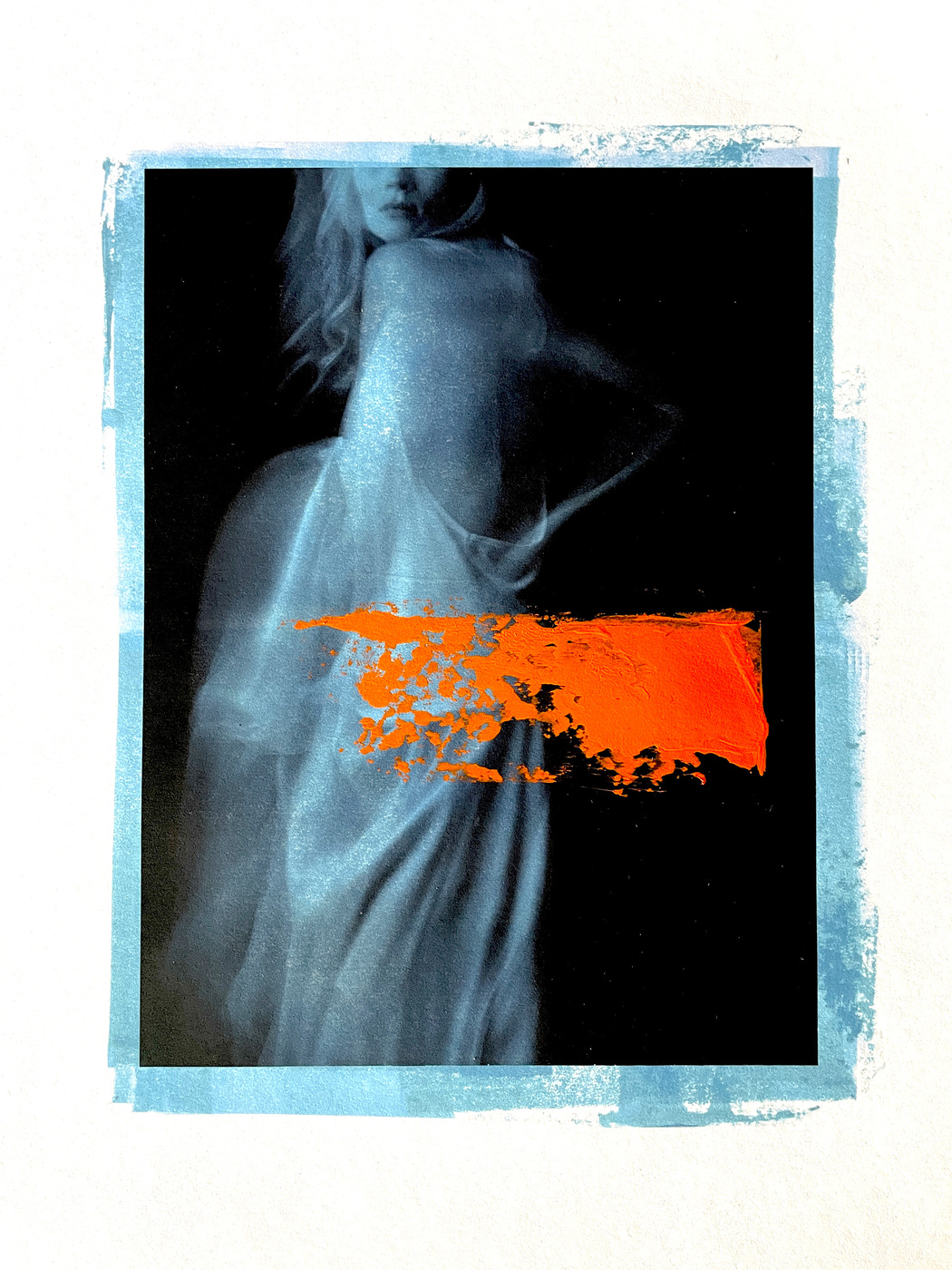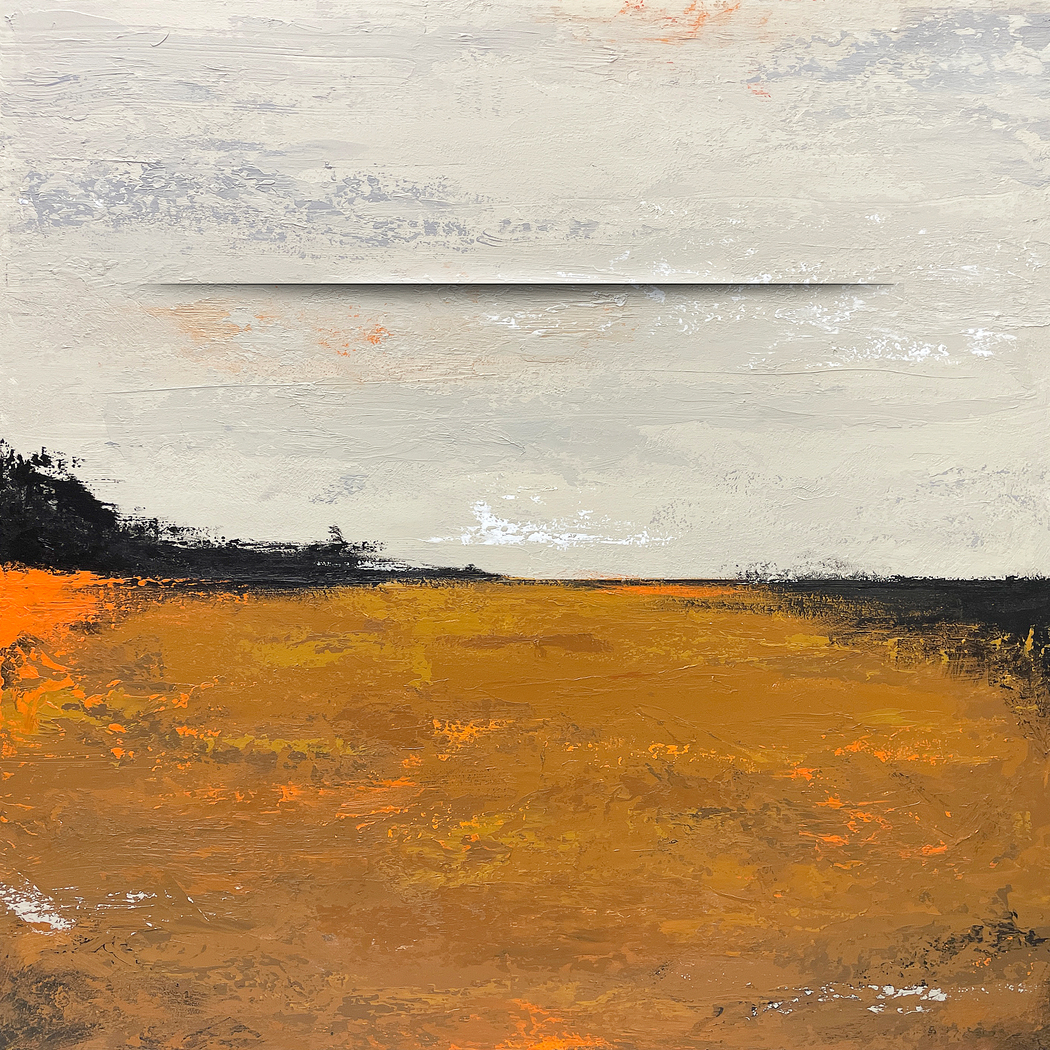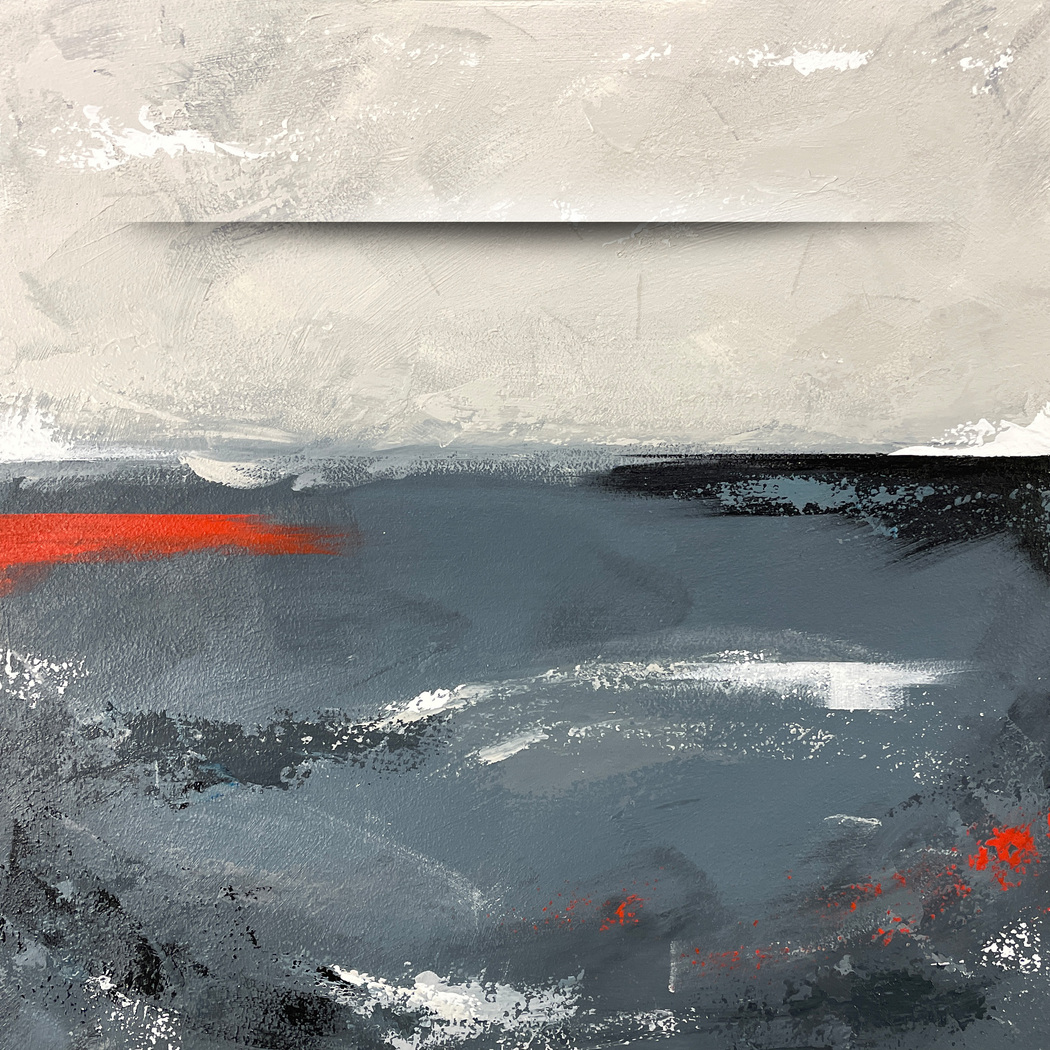Michael Alan Coakes
Where do you live: Park Ridge (northwest suburb of Chicago) for the last 30 years.
Your education: I was lucky to go to West Aurora High School (Aurora, IL) which had a college-equivalent art department that included a lot of independent study level courses. The instructors there had a profound influence on my discipline as an artist. That was followed by a few random classes at various schools including NIU and the American Academy of Art in Chicago.
Describe your art in three words: That’s probably a better question for viewers of my art.
Your discipline: Sketch and make notes of concepts that come through observations and intuition. Then pursue those that intrigue you the most. Always leave room for exploring as you work.
Website | Instagram
 Michael Alan Coakes | Cool Flame
Michael Alan Coakes | Cool Flame
Your works are often described as being rich with allure, balancing bold simplicity with dream-like mystery. What is the source of this allure, and how do you achieve that balance in your work?
I’ve always been attracted to bold images that manage to embody a sense of elegance. Images that leave a sense of mystery, often by omitting something via creative cropping of the subject or through a creative visual obstruction that leave the viewers “wanting more” or allow them to complete the image in their own mind.
You mentioned that you don’t always view your work created with a camera as photography, as you might use other media like charcoal or paint. How does this perspective influence your creative process?
Most of my recent work IS photographic but my early work was done with graphite, charcoal or paint. That process of rendering or developing an image is the foundation of my process. In virtually all of the newer work, I sketch the images out in pencil or pen before even deciding who I want to work with as the model. Those sketches make it easy for me to foresee and make adjustments in my compositions. It helps me to better communicate my visual goals with the model as well. At that point the camera is just a tool to create a finished rendering of the concept in my sketches.
 Michael Alan Coakes | Horizons About To Begin
Michael Alan Coakes | Horizons About To Begin
Growing up near Chicago, how did the local visual culture or visits to the Art Institute of Chicago shape your approach to art and your style?
I grew up in the late 60s and early 70s. Pop Art, Op Art and Psychedelic Art were in vogue in the popular culture of TV and music at the time.
I was especially enthralled with the art common to the marketing of music scene of that time. Meanwhile, visits to the AIC included some of the Pop Art and Op Art but offered a bridge to the works of classic art masters from Monet and Renoir to Grant Wood and Edward Hopper. The diversity of what art and artistic expression could be seemed profound.
After a successful career in commercial art, you returned to fine art. What was the turning point that made you realize your true passion for fine art?
Working in the field of commercial art can be fun and rewarding in many ways. The sharing of ideas and collaborating with individuals can help expand your perceptions and sense of creative possibilities but it rarely gives you a platform for your own vision, voice and message.
Fine art offers that and through that opportunity, a chance to connect with others and perhaps make them feel a sense of being understood or touched emotionally.
 Michael Alan Coakes | Horizons A Tale Untold
Michael Alan Coakes | Horizons A Tale Untold
Can you share more about your experiences in over 70 solo and group exhibitions? How have these experiences impacted the way you approach your art and interact with the art community?
The thing I found most surprising was the way having my art exhibited changed me so dramatically. I was, for most of my life, what would refer to as, a painful introvert. I found talking to anyone who wasn’t a close friend, or to groups of people, scary and beyond uncomfortable.
Attending exhibits that my work was part of, whether solo or group shows, gave me an opportunity to ask people what their perceptions or questions about my work provoked. This sparked conversations and in short time I realized I’d become comfortable talking with strangers even. I’m still a relatively quiet and reserved personality but I’ve found some comfortable middle ground between being shy and gregarious.
You mention that the tools you use are less important than the work itself. Can you elaborate on this philosophy and how it influences your choice of medium for each project?
For me, having experience with a number of mediums and artistic tools allows me to choose which will best express the emotion that I’m trying to convey. For instance, some of my most recent work is a big departure from the work I’ve been doing for the last fifteen years.
I’ve been pondering the concept of “horizons” as a metaphor for something that’s universally common in everyone’s life. The idea that there’s a goal or beginning or end of a chapter in our life, like a horizon looming out before us. But even when we reach that goal, there’s still another horizon (or goal) out there to reach, to make the journey to. It could be a job, or a relationship, an educational degree or parenthood. It’s an abstract idea and I think it’s one that can represent some very emotional responses for a lot of people. For me the best tools to explore this concept is paint, brushes and palette knives, but those don’t matter so much as the response the final piece of art provokes from the viewer.
Many of your subjects feel familiar yet vaguely unknown. How do you approach creating characters or scenes that evoke this feeling of familiarity without giving away too much?
More than “giving away too much”, I think of it more as not defining things too much. For instance, if, as an artist, you portray a figure too specifically, maybe giving them too much of an element of identity, you’re basically creating a portrait (it represents someone). But if you leave a sense of vagueness that figure can represent a feeling or a state of mind. Something the viewer can more easily relate to.

Leave a Reply